
19 minute read
Wooshteen Kanaxtulaneegí Haa At Wuskóowu
Haa At Wuskóowu Wooshteen Kanaxtulaneegí
Sharing Our Knowledge conferences bring together Tlingit tradition bearers and academics By Joaqlin Estus (Tlingit and English-Irish)
Advertisement
When I was in Juneau in September 2019 for the Sharing Our Knowledge conference, several people, including a few non-Natives, in casual conversation referred to other individuals by their Tlingit name. Over the years I’d seen this a few times before but now it seems to be a growing trend.
This is new. Decades ago, when elders who spoke Tlingit as their first language were more plentiful, I don’t recall them using Tlingit names when talking with someone who didn’t speak Tlingit. The people using them now are my age and younger. And like me, they didn’t grow up speaking Tlingit. They’re learning it by taking classes, either online or at the University of Alaska. And some are learning it well enough to converse and give talks in Tlingit.
The language classes are relatively new too. My grandmother and her generation grew up speaking Tlingit. My mother’s generation, people born in the 1920s and 30s, were mocked, shamed, and punished for speaking Tlingit. They were told that speaking Tlingit to their children would handicap the child’s ability to speak English fluently. So they didn’t pass on the language.
For the most part, my generation, baby boomers, learned only a few words and phrases. Some learned Tlingit language songs in a dance group. That use generally didn’t transfer to speaking Tlingit.
Kudos to the elders, the Tlingit speakers who persevered in using their language, often in formal settings such as ku.éex’ (aka potlatches), but also in casual conversation. They taught people how to inDuring Eagle Night in May 1993, Richard Jackson, left, pays tribute to Andy Hope III, standing in a Button Blanket, for his work in organizing the conference.
troduce themselves in Tlingit. They translated hymns into Tlingit and taught people how to sing them. And when the University of Alaska and school districts succumbed to years of determined lobbying and started offering classes, elders took on a new role: that of language teacher and professor.
Their drive to keep traditions and the Tlingit language alive are also given expression at the Sharing Our Knowledge conferences of Southeast Alaska. The conferences were the result of the vision and hard work of founder Andy Hope III (Xhaastánch), Tlingit, of Juneau (1949-2008), and a couple who were part of the effort from its earliest days: Nora Marks Dauenhauer (Keixwné), Tlingit, (1927-2017) and Richard Dauenhauer (Xwaayeenák) (1942-2014), also of Juneau.
In the 1970s, the three founded the nonprofit Tlingit Readers, Inc., to publish instructional and resource materials on the Tlingit language and culture, and to organize conferences. The first was held in 1993. Attendance has steadily grown and the past several gatherings attracted more than 400 participants each.
The conferences are unique due to the mix of people who attend to give talks and to learn. Agendas feature clan leaders and fluent speakers of the Tlingit language from Alaska, Canada, and Lower 48 states. The elders mingle with scholars and scientists, many with advanced degrees, and some from Europe and Russia.

Clan leaders at the 2012 conference in Sitka: left to right, Chatskookoo Éesh (John Nielsen), Chookaneidí, Iceberg House; Ł’eiwtu.éesh (Herman Davis), L’ooknaxh. ádi, Platform House; Yéił xhaagú (John Hanlon), L’ooknaxh.ádi, Frog House; and Khaa.ítdei du.áxhch (Ed Kunz), L’ooknaxh.ádi, Outwards House.
Like his father and grandfather, Andy Hope had served in tribal governance. He worked to boost funding and give Alaska Natives a greater say in education, social services, and justice. He embraced a belief handed down in his family: to have control over their lives, the Tlingit must learn to use the white man’s tools — whether it be the right to vote or education.
In his 40s and 50s, Andy gravitated toward re

search and writing. He wrote books of poetry and essays. He became president of the national Before Columbus Foundation, which promotes literary excellence and recognition of overlooked multicultural authors.
Andy’s son Ishmael Hope (Khaagwáask’) is Tlingit and Inupiaq, and is now the executive director of the all-volunteer Sharing Our Knowledge conference organizing committee. In many ways
he follows in his father’s footsteps. He’s a poet and author, scholar of Indigenous cultures, storyteller, actor, and playwright who teaches the Tlingit language. Months after Andy’s death in August of 2008, Ishmael said of his father, “His heart was in learning.”
“Andy was an intellectual; he sought scholarship, knowledge,” agreed Andy’s close friend and colleague Peter Metcalfe, a writer/publisher and event producer.
Andy earned a Master’s degree in cross-cultural studies. He read the works of anthropologists and historians, and explorers’ papers. He talked with or read the works of Tlingit leaders such as Louis Shotridge, William Paul, Sr., and Mark Jacobs, Sr. He praised the strength and determination of the Tlingit people in maintaining their language and traditions. He was struck by the pervasive importance of clans as the foundation of Tlingit social structure. The first conference was called Conference of Tlingit Tribes and Clans, or the clan conference.
Tlingit people are born into a clan in one of two moieties, Raven and Eagle or Wolf. The clan structure expresses itself in “almost inviolable ties to family,” said linguist Alice Taff, PhD. “The extent of family is the huge clan system knit together. Look how people regard their challenged family members. They’re not shuffled off to asylums. It’s just a different way of thinking about family and life. I am my brother’s keeper,” said Taff.
It’s important the two moieties are in balance. For instance, gifts might be given to restore balance after conflict or to recognize support and assistance given during hard times. When one side speaks, the other side is given time to reply.
“When we talk about clans, when the clans are strong, when people speak in the [Tlingit] language, they know how we own the land. They feel the ownership of the land,” said Ishmael.
Tlingit elder David Katzeek (Kingeistí), who has attended all of the Sharing Our Knowledge conferences, agrees. He said, “We realize how we were rooted together as a people, but not only that as a people, but how we were also rooted together with the earth.”
In the mid-1980s, Andy set out to list all the clans. He raised funds to publish the first graphic compilation of more than 100 Tlingit clans and clan houses; the poster “Traditional Tlingit Country.”
“Thanks to Andy’s relentless research, we’re able to look at a simple layout and see how Tlingit culture is organized,” said Metcalfe, who produced the map, now in its seventh printing.
Ishmael said his father’s realizations came during a time when little to no recent research was based on Tlingit language recordings and writings or interviews with Tlingit elders.
Nora and Richard Dauenhauer wanted more people to learn the Tlingit language so they could appreciate its beauty, complexity, and power. Nora said of some authors, “They didn’t know Tlingit so they made mistakes. To explain in English what the Tlingit were saying, it [the meaning] was just lost.”
Like Andy, the Dauenhauers witnessed a larger society that did not appreciate the wisdom and intellectual depth they saw in Tlingit and other Alaska Native cultures. Richard said that in the 1970s, language teachers objected strenuously to his suggestion Alaska Native languages be taught in school, and even in the 1990s, one Southeast Alaska school administrator said he just didn’t see how Tlingit could fit into his school’s curriculum. Richard and Nora said Tlingit and Native American lore was trivialized and sometimes misperceived as children’s literature.
It was not just Native languages that were looked down upon. As recently as 1992, a minister in the predominantly Tlingit village of Kake told church members to burn non-Christian Tlingit items, including precious regalia and at.óow (sacred objects). Some did.
right: Lily Hudson Hope and her daughter Elizabeth weaving a Chilkat robe during a demonstration at the Walter Soboleff Building in summer 2017. far right: Tlingit elder David Katzeek while being interviewed by Joaqlin Estus, September 2019 in Juneau. below: Andrew Hope III with his sons Ishmael and Andrew Hope IV at Taku Harbor, 1994.
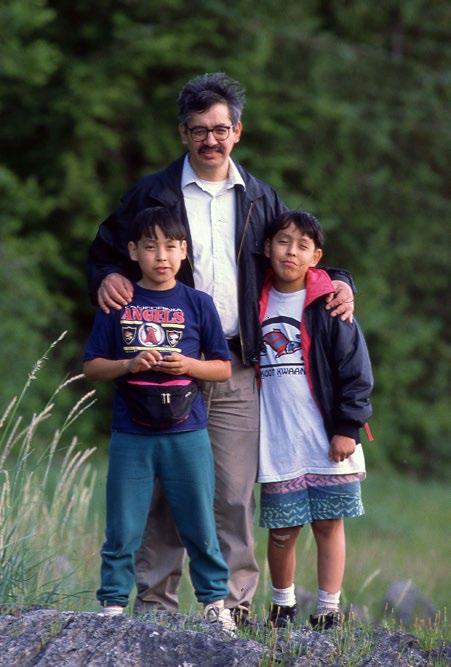
As for scholars who studied the Tlingit people in those days, “There was an air of condescension on the part of the academics, and there was resentment on the part of the elders. They weren’t always being properly credited for their contributions,” said Metcalfe.
“I’m sure a lot of people would remember [that era]. There was nothing. Nothing. The lack of information, the ignorance, was systemic,” said Ishmael. “That was because of how much nonNative scholars were controlling how the information of our people was disseminated.”
But, according to Metcalfe, “Andy saw a new generation of academics who were coming to the fore out of the sixties and seventies. They were enthusiastic and inspired to learn what they could about this culture in a really positive way,” said Metcalfe. “Andy saw that kind of flowering and he was able to bring us all together.”
Andy wanted to create an environment where people with different kinds of wisdom, elders and scholars, could cordially and equally share their knowledge, Metcalfe said.
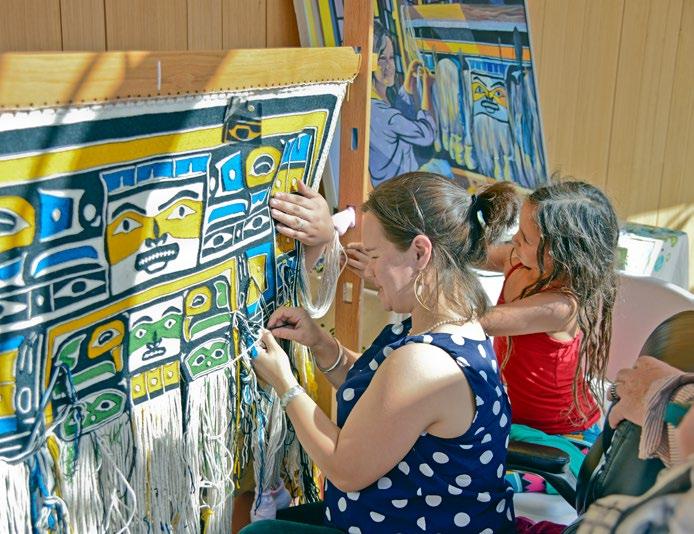
The first conference was organized so clan leaders could discuss customary law and clan genealogy, and hold ceremonies and record them on video. Andy raised money to hold it, and brought in partners, including the Dauenhauers. The Dauenhauers had been on their own journey to explore and document Tlingit knowledge, language, and oratory since the early 1970s.
Their life’s work began when Nora Marks shared recorded speeches for sharing grief, from
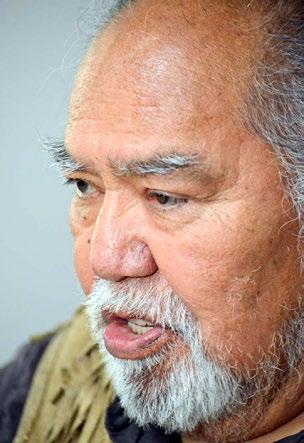
a memorial ku.éex’, with then professor Richard Dauenhauer at Alaska Methodist University in Anchorage, whom she later married.
“Our lives have been changed by the dignity and power of [the Tlingit orators’] spoken words,” she later stated in one of a series of books on Tlingit oratory she and Richard wrote. Their work ultimately led to more than 600 recordings of spoken Tlingit, and dozens of books, training manuals, and school curricula.
Richard’s insights gained earlier while earning a PhD in comparative literature were helpful as he studied Tlingit. He was fluent in half a dozen languages. He had read epic tales in the original Greek, and studied English poetry and Shakespeare. Tlingit oratory held up well in comparison, he said. It was world-class literature, as “great as anything in English poetry,” said Richard. The Sharing Our Knowledge conferences have brought new understanding of Tlingit culture and oratory to a larger audience. Sharing Our Knowledge conference sessions in recent years have included presentations and discussions on the effects of language loss on health, intellectual property rights of the Tlingit, and the Smithsonian’s use of 3-D technology for preservation of sacred items (at.óow in Tlingit). Time is set aside for cultural and clan leaders to host activities such as memorial and naming ceremonies. In hands-on workshops, people can try beading or target practice with a spear thrower. They can become immersed in a Tlingit language class, or join a museum or boat tour.
Sculpin Hat Revival
For Florence Sheakley (Khaakal.áat), the conferences refresh her knowledge of Tlingit and renew her commitment to pass it on to younger generations.
With her sister Nora and her mother, as well as close friends now passed on, “I struggle to find somebody who can speak Tlingit and have meaningful conversation,” said Sheakley. Going to the conferences and talking with other fluent Tlingit speakers she otherwise rarely sees, “it’s broadened my language.”
Sheakley teaches Tlingit in Juneau schools where she says children pick it up “like sponges.” “Sometimes the children from the school where I teach, they’ll see me and they’ll come running up, hug me and, and then when they’re leaving they turn around and say, ‘Yak’ei yee xhwasatéeni’ [It’s good to see you!] Oh, I’m just thrilled to pieces when I hear that,” said Sheakley.
Kenny Grant (Káaxhkhaatuklaghé), Tlingit, of Hoonah, an elder and president of the Hoonah Indian Association, appreciates the participation of Canadian Tlingit. He said, “I like to see the interior Tlingit have come down here. It’s really good to hear them speak their language, and I can understand them.”
The organizing committee is working toward more involvement by the Haida and Tsimshian neighbors of the Tlingit as well.
While Alaska Natives are immersed in the non-Native world, a smaller percentage of non-Natives become as engaged in Native cultural events. For those who do, Taff said, it can be an eye-opening experience.
“I think the conferences open the lines [between cultures] and the hearts of non-Natives who see, ‘Hey, we’ve got proud people here. We’ve got knowledgeable people. We have important people. We have this huge history,’” said Taff.
In at least one instance, the conferences changed the direction of academic research. Aldona Jonaitis, PhD, is a retired anthropology professor, former director of the University of Alaska Museum of the North in Fairbanks, and the author of several groundbreaking books on historical Tlingit art. Sharing Our Knowledge conferences changed her focus. “So I’ve been… interviewing contemporary artists, gathering information and getting pictures” said Jonaitis. “I’ll eventually write a book about contemporary artists.” She also appreciates that people affirm her work. “The philosophy behind the clan conference that is so valuable to me, from a non-Native perspective, is the acceptance of my work,” said Jonatis. Dartmouth anthropology and Native American studies professor Sergei Kan, PhD, a frequent speaker and organizer of the conferences, says they have given him hope. As he saw the number of fluent Tlingit speakers declining in the 1980s, he became worried about what was being lost. Decades later, after watching young people learn Tlingit, become scholars, earn advanced degrees, and begin teaching, “I’m much more optimistic now,” said Kan.
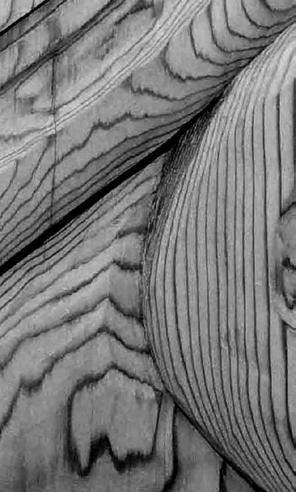
THE TLINGIT OF YESTERYEAR passed down a rich, complex culture, including “at.óowu,” or clan property, that embodies the spirits of past, present, and future generations.
Ceremonies were held in collaboration with the 2019 Sharing Our Knowledge conference in Juneau, during which the Smithsonian Institution’s National Museum of Natural History gifted a near exact replica of the fragile Sculpin (bullhead fish) Hat that, through the ritual of a ku.éex’ (potlatch), became at.óowu of the Sitka’s Tlingit Kiks.ádi clan of the Raven moiety.
The project took seven years and involved several trips by Tlingit artists and Kiks.ádi clan leaders to Washington, DC, where they guided and approved the making of two replicas, one for the clan and the other to remain with the institution. To maintain balance between the Eagle and Raven moieties, the Kiks.ádi asked that Smithsonian staff adopted into the Eagle moiety make the new hats. NMNH Repatriation Office Tribal Liaison Eric Hollinger (Angoon Dakl’aweidi clan) coordinated the project and worked on attachments and Smithsonian Exhibits Model Maker Chris Hollshwander (Sitka Kaagwaantaan clan) milled and painted the hats. The hat was taken from Sitka in 1884, and until 2012, when Harold Jacobs of CCTHITA identified it as a Kiks.ádi crest object, it was held in storage at the Smithsonian Museum of Natural History. It is deeply cracked, missing a large rim section, and is adorned with toxic mercury paint, making it unsafe to use in ceremonies. However, it’s vitally important that the ancestors’ spirits participate in formal ceremonies such as memorial potlatches. To help, the Smithsonian Institution created two replicas of the Sculpin Hat. One replica now belongs to the Kiks.ádi clan and will be used in ceremonies. The second replica will be used at the National Museum of Natural History to tell the story of this collaboration. The carefully
Joe Zuboff, a Deisheetaan clan leader from Angoon, assists Smithsonian Exhibits Specialist Chris Hollshwander with attaching the cape.

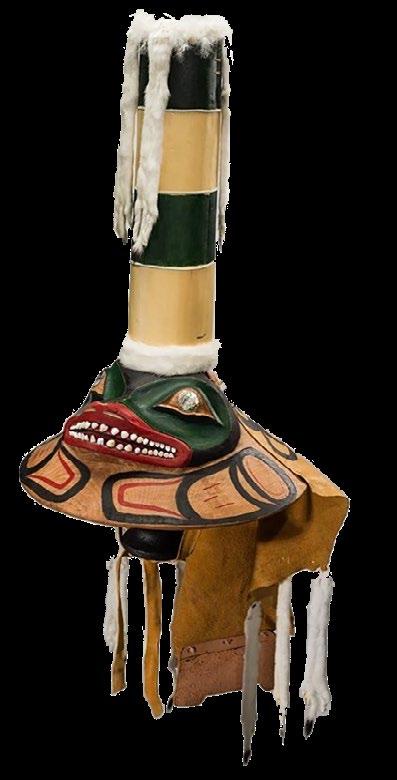
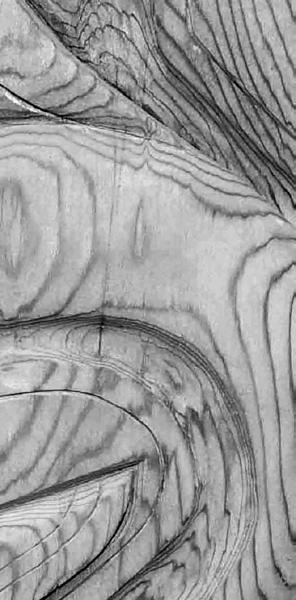
protected original will remain with the Smithsonian. The Smithsonian went to great lengths to study the Sculpin hat, using CT-scans and chemical and microscopic analyses to identify the materials that it was made of and to learn how it was decorated. The intensive inspection found that the hat was made with wood, paint, deer and walrus hide, ermine, operculum shell, swan down, spruce root lashings, sea lion whiskers, and ermine. Traces of mountain goat and deer hair, and even evidence of an eagle, were also found.
A 3D scanner was used to capture the exact dimensions of the hat. It then had to be digitally repaired. A computer-aided wood mill was used to carve the alder and yellow cedar sections collected in Southeast Alaska. Then the replicas were painted and adorned with the same kinds of details as the original.
“It’s like seeing an old friend come around the corner when you thought you’d never see them again,” said clan leader Ray Aayaandx Wilson in an interview with the Juneau Empire. Cyril “Joe” Zuboff, a Tlingit elder, is caretaker for Angoon’s Raven house at.óowu, or sacred clan objects. He said it’s a joyful occasion when a replica is welcomed back. “Whenever I see such things on display, there’s that feeling, that connection of love and respect.” said Zuboff. Lillian Petershoare (L’eegandoo.u), Tlin- git, of Juneau, is a retired U.S. Forest Service tribal relations program manager. She said 2019 was a year of unusually hot weather in Juneau so that year’s conference theme, “In - digenous Perspectives on Climate Change,” was a timely call to action.
She said one session that hit home for her was a talk by Tom Thornton, PhD, University of Alaska Southeast dean of arts and sciences, on “The Great Flood, Sacred Mountains, Cli - mate Change.” Petershoare said, “His mes- sage was all about finding resiliency within one’s own stories. And I think we all have to feel empowered to find those avenues of re - siliency because we are experiencing change at a fast rate.”
For Lily Hope (Wooshkhindeinda.aat), Tlingit, of Juneau, the connection with others she experiences at the conferences is impor - tant. She and Ishmael are raising five young children. At the 2017 and 2019 conferences, Lily organized weaving demonstrations, as had her mother, Clarissa Rizal, the famed weaver and artist who passed away in 2016. Carrying on that tradition, Lily and her colleagues demonstrate and teach the pains- taking hand-weaving techniques that go into making Chilkat and Ravenstail robes. Lily said she enjoys “the camaraderie of getting together as weavers, having a space together and sharing knowledge, really like sharing ideas, ‘How do you do interlock- ing?’, or, ‘Gee, is it always over fours with this particular pattern or can we shrink that pattern this way?’”
Metcalfe recalls that at the 2007 Sharing Our Knowledge conference in Sitka, Andy said, “‘People are hungry for this sort of thing.’ We were standing in the hallway of the convention center, and people were bustling about, heading to the workshops,” Metcalfe said. “It was like being in a busy school cor- ridor between classes.
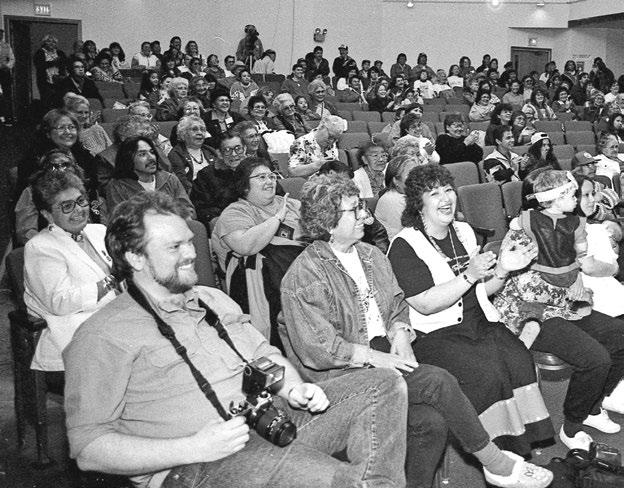

above: The audience enjoys a Tlingit language presentation at the 2013 conference. left: An audience at the 1993 conference enjoys a cultural night. In the first row are Alaska State Museum curator Steve Henrikson, left, sitting next to Ethel Lund, founder of the Native-owned health consortium, SEARHC.
“After the conference, I remember Andy expressing astonishment that there had been an overflow crowd assembled for an evening of storytelling and poetry... ‘Standing ovations for poetry? It was incredible,’’’ Hope exclaimed to Metcalfe.
One reason for the success is the interest in learning about the Tlingit, Haida, and Tsimshian peoples from the perspective of those who live it. The Tlingit say they have owned and lived in Southeast Alaska “since time immemorial.” And archeological records show their history in the area goes back at least 10,000 years. The temperate forests were full of game and the coastal waters teemed with seafood, a bounty that supported the development of a complex, multi-layered society renowned for its sophisticated art.
The Hopes, the Dauenhauers, fluent language speakers, advocates, and others have aided a transformation in attitudes toward Native languages and traditional cultural practices. These days speakers of the Tlingit language are given a platform to speak and teach both at the conferences and in classrooms. And a few parents are raising their children with Tlingit as the main language spoken in the home. Katzeek said, “I’m glad that I’ve lived long enough to watch what’s happening with Sharing Our Knowledge and how it’s evolving.” The conferences are in line with a Tlingit value, “to take pride in family, clan, and tradition.” Still, the number of people who speak Tlingit as their first language continues to decline. Now an estimated 120 people speak Tlingit. X’unei Lance Twitchell, PhD, University of Alaska Southeast associate professor of Alaska Native Studies, is a leader in the revitalization of the Tlingit language. He’s developed a 30-year plan to increase the number of people who speak Tlingit from dozens to hundreds or thousands. In his 2018 dissertation for a doctoral degree in Hawaiian and Indigenous Language and Culture Revitalization, he proposed a series of interconnected methods that, with a lot of hard work and determination, would result in language revitalization.
In the last pages of his dissertation, Twitchell included a 2013 quote by a 91-year-old elder from the Southeast Alaska village of Angoon. Kaalkáawu Cyril George closed his comments to a class of Tlingit language students as follows:
Axx’agáaxi áwé yéi kgwatée: ch’u tleix, kugaagastee: Lingít.
My prayer is going to be this: forever, let it exist: Tlingit. ■
Videotaped interviews for this article were supported by conference funders, which include the National Science Foundation and Goldbelt Heritage Foundation. Sealaska Heritage Institute administered the NSF grant. Conference videos are available at the website www. sharingourknowledge.org. For their thoughtful reading of earlier drafts of this article, a special thanks goes to Peter Metcalfe of Metcalfe Communications, Larry Goldin of Aurora Films, Laurie Cropley, and Dr. Alice Taff. Except as noted, all photos by Peter Metcalfe.










